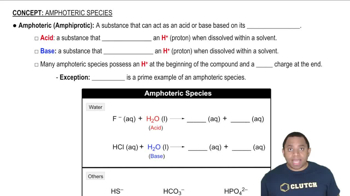Consider the hypothetical molecule B-A=B. Are the following statements true or false? (a) This molecule cannot exist. (b) If resonance was important, the molecule would have identical A–B bond lengths.
The Ti2 + ion is isoelectronic with the Ca atom. (b) Calculate the number of unpaired electrons for Ca and for Ti2+.
 Verified step by step guidance
Verified step by step guidance
Verified video answer for a similar problem:
Key Concepts
Isoelectronic Species

Electron Configuration

Unpaired Electrons

An important reaction for the conversion of natural gas to other useful hydrocarbons is the conversion of methane to ethane. 2 CH4(g) → C2H6(g) + H2(g) In practice, this reaction is carried out in the presence of oxygen, which converts the hydrogen produced into water. 2 CH4(g) + 12 O2(g) → C2H6(g) + H2O(g) Use Table 8.3 to estimate H for these two reactions. Why is the conversion of methane to ethane more favorable when oxygen is used? Why is the conversion of methane to ethane more favorable when oxygen is used?
Two compounds are isomers if they have the same chemical formula but different arrangements of atoms. Use Table 8.3 to estimate H for each of the following gas-phase isomerization reactions and indicate which isomer has the lower enthalpy. (d) Methyl isocyanide → Acetonitrile
The Ti2+ ion is isoelectronic with the Ca atom. (c) What charge would Ti have to be isoelectronic with Ca2+ ?
Consider the molecule C4H5N, which has the connectivity shown below. (a) After the Lewis structure for the molecule is completed, how many s and how many p bonds are there in this molecule?
(c) Hydrogen peroxide is sold commercially as an aqueous solution in brown bottles to protect it from light. Calculate the longest wavelength of light that has sufficient energy to break the weakest bond in hydrogen peroxide.
